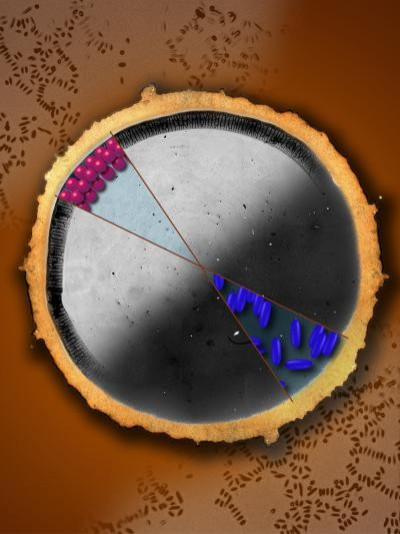Scientists Debunk the Coffee-Ring Effect [VIDEO]

As you sip on your morning coffee, do you ever wonder why a ring forms when you spill it? Scientists have debunked the coffee-ring effect, attributing the cause to spherical particles, which can revolutionize printing and paint chemicals or even makeup.
A team of researchers at the University of Pennsylvania has found that coffee, made up of spherical particles rather than oblong like most other liquids, dries on surfaces in a unique way to explain the dark ring around coffee stains.
When a liquid in general dries, edges remain fixed as liquid is evaporated, with fluid and particles flowing outward.
Drying from the inside out, a coffee droplet responds to surface tension by pulling in liquid from the center of the drop towards the outer circumference. Surface tension drags the spherical particles, which clump together densely in a high concentration, outward to the edges of the drop. This creates the dark ring on the outer edges of a coffee stain.
The scientists, led by Arjun Yodh at the University of Pennsylvania, found that liquids with more elongated, oblong particles evaporate in the same manner, except these particles do not exhibit the coffee-ring effect because they spread out more evenly rather than clumping densely around the edges.
We found that if you change the shape of the particles in the solution, the coffee ring effect goes away, and you end up with a uniform coating, said Peter Yunker, a graduate student who participated in this study.
The findings show that the density of clumping particles changes depending on the shape of the particle itself. Rounder particles pack more tightly than elongated particles, which distribute more evenly throughout a liquid.
Yodh says this can influence the way paint or printing ink or even makeup and other commercial products are made for a more even distribution of color.
This work gives us a new idea about how to make a uniform coating, relatively simply. If you change the particle shape, you can change the way a particle is deposited, Yodh said. In some cases, even just a small amount of ellipsoids can change the way the particles deposit when they dry.
This research can lead to cheaper ways for companies, particularly paint and ink manufacturers, to create colors that dry evenly.
© Copyright IBTimes 2024. All rights reserved.






















